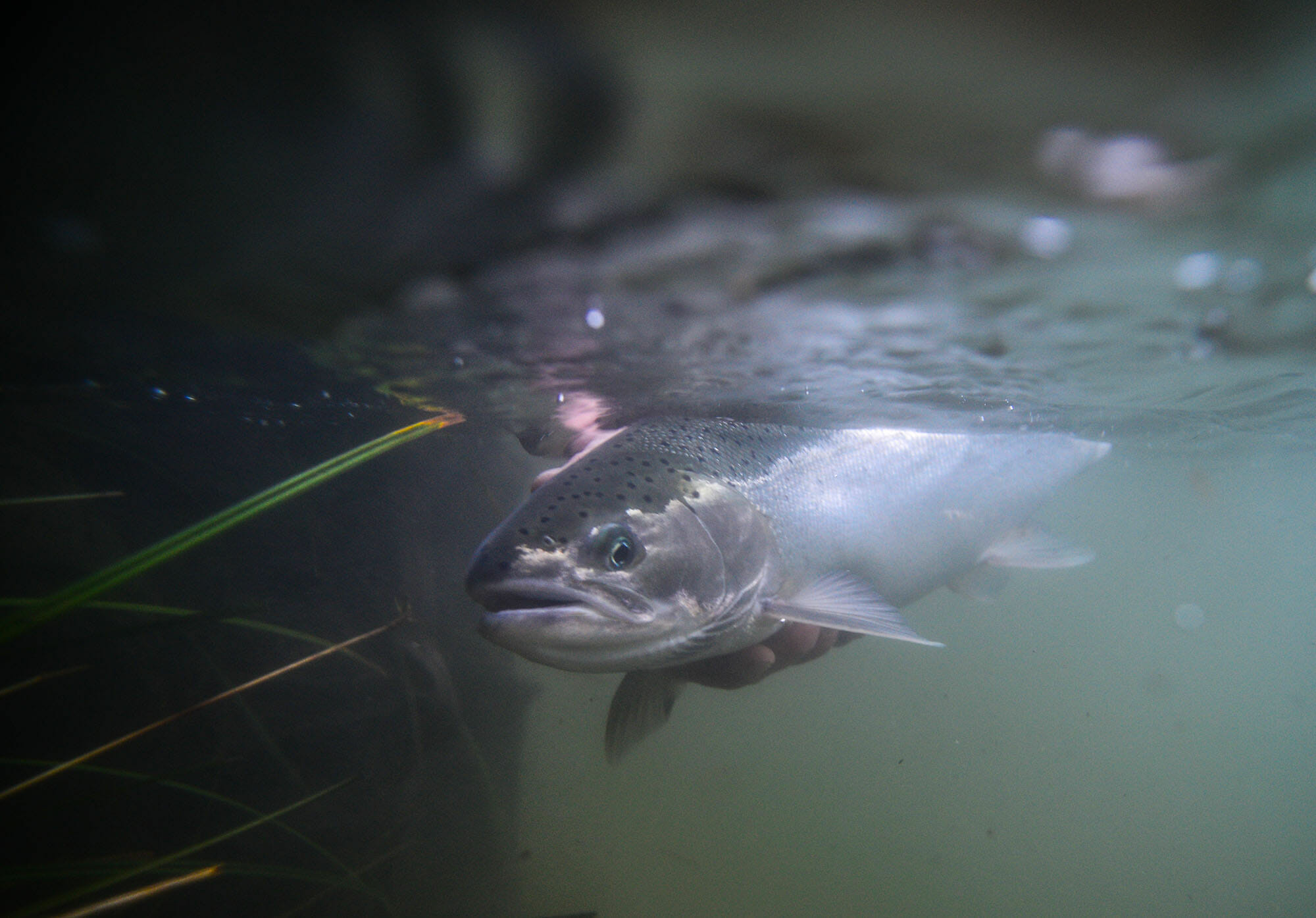Another fishing experiment in a lifetime full of them.
The strike was surprisingly violent.
Really, it was just surprising.
How often does that happen?
We take a minute off. Or maybe just a few seconds. And boom!
In this case I had been flipping the end of the fishing rod in hopes of removing a loop of line that had looped around the tip top. I wasn’t watching my float. Wasn’t even considering that a fish would decide to hit on that cast, after the previous 150 or so had produced nothing.
But, again, that seems to be how it happens. Usually, we’re left shaking our head in frustration, our inattention or distraction at least 90 percent to blame for the inevitably missed hookup.
But sometimes we get lucky. And this was one of those times.
As the steelhead ripped downstream the loop on the tiptop miraculously fixed itself, a much-preferred alternative to a broken rod tip and broken tippet.
But then came the next challenge. I had to fight the fish, no small thing as this was the first fish I’d hooked on a centerpin setup.
“Now you have gone completely to the dark side,” a friend had chided when I told him I was going to try centerpinning for steelhead on my upcoming trip to my home waters in Southern Oregon.
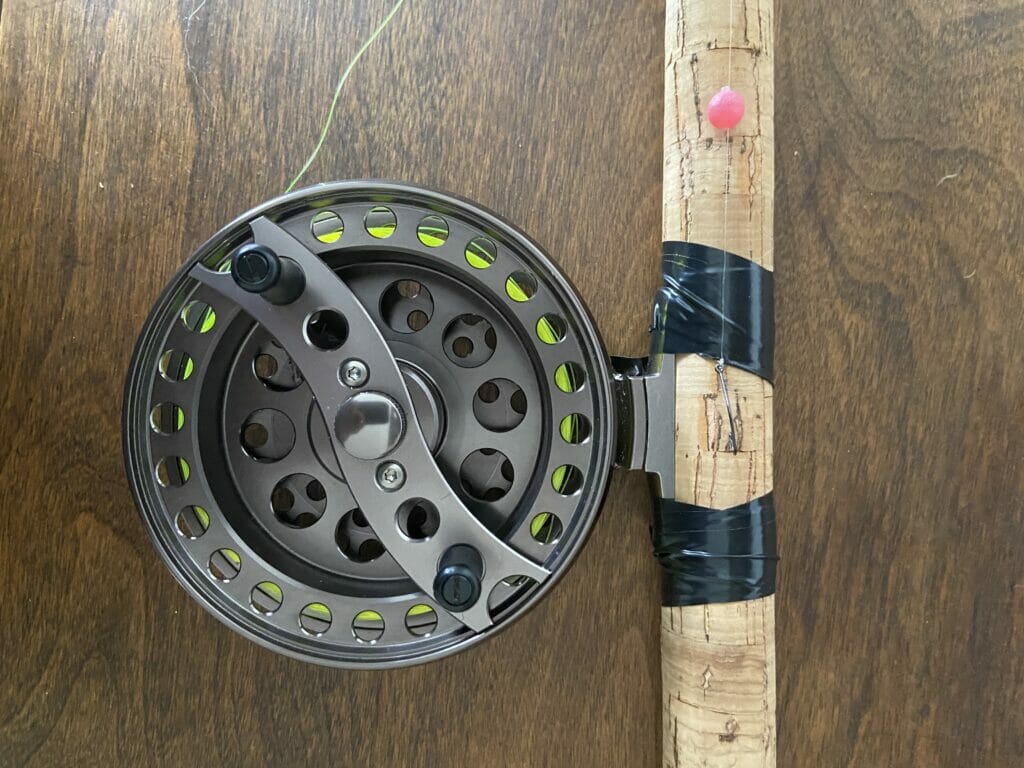
“Actually,” I countered. “I’ve been there for a long time.”
I love fly fishing. But I also love other types of fishing and I gravitate toward what I think will work best under the conditions. For fishing beads for steelhead, centerpinning sure seemed like a good approach. As someone who is always looking for the next great thing and new adventure, I had to try it.
But back to the matter at hand. The first steelhead I had hooked — albeit accidentally — on centerpin gear was intent on heading back to the Pacific.
Unlike fly reels that feature drag systems, a centerpin reel has no drag. None. That’s their main trait. So, fighting a fish requires manual palming of the reel. When was the last time you fought a hot 10-pound fish on a reel with no drag? For me, the answer was “never.”
“I’m hooked up!” I yelled to Pat, the run’s patriarch.
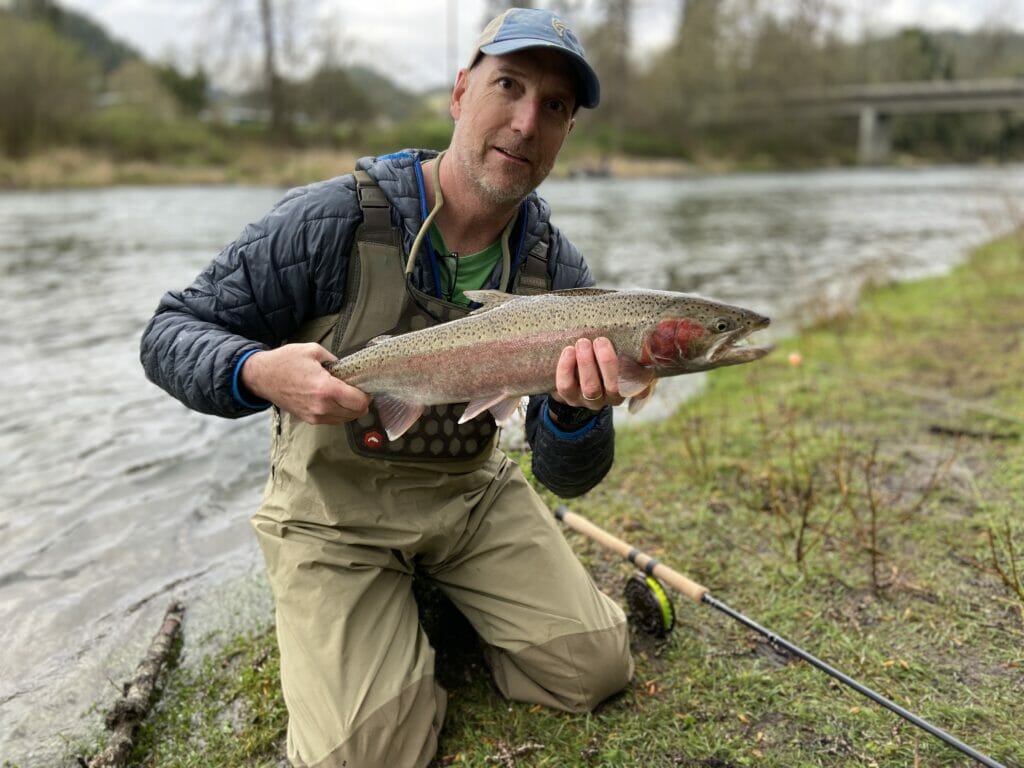
He was just upstream, packing up his gear after yet another long day on the river. He’d caught a couple fish and was ready to head home for dinner. I think he was more surprised than I that I was into a fish. This was my second day with the centerpin. Pat had been watching me. There’s a learning curve and let’s just say I wasn’t too far into it.
Centerpinning is hardly a new thing. It’s an especially popular technique for targeting steelhead in Great Lakes tributaries. A friend who fishes up there a lot told me a few years ago that he refused to try it because it’s too effective.
I get to fish for steelhead at most a couple of times a year, usually when I’m back in Oregon visiting family. With limited fishing hours at hand, I’m all about maximizing my chances.
So, I started watching YouTube videos and, just before that trip out to Oregon early this spring, I sprung for a centerpin outfit — an Aventa rod and reel from Okuma. At about $300 total, the set was a reasonably affordable (and highly rated) way to get started.
The reel is the key to the technique. Centerpin reels can have a clicker, but when the clicker is off (as it is when actually fishing) there is virtually no drag on the spool. Ball bearings allow the line to pull off the reel with just a tiny amount of force — such as what you get when your rig is floating downstream. You pair that reel with a long rod (my Aventa is 13 ½ feet long) to help reduce the amount of running line on the water. The goal is something those of us who fly fish often pursue — a long, drag-free drift.
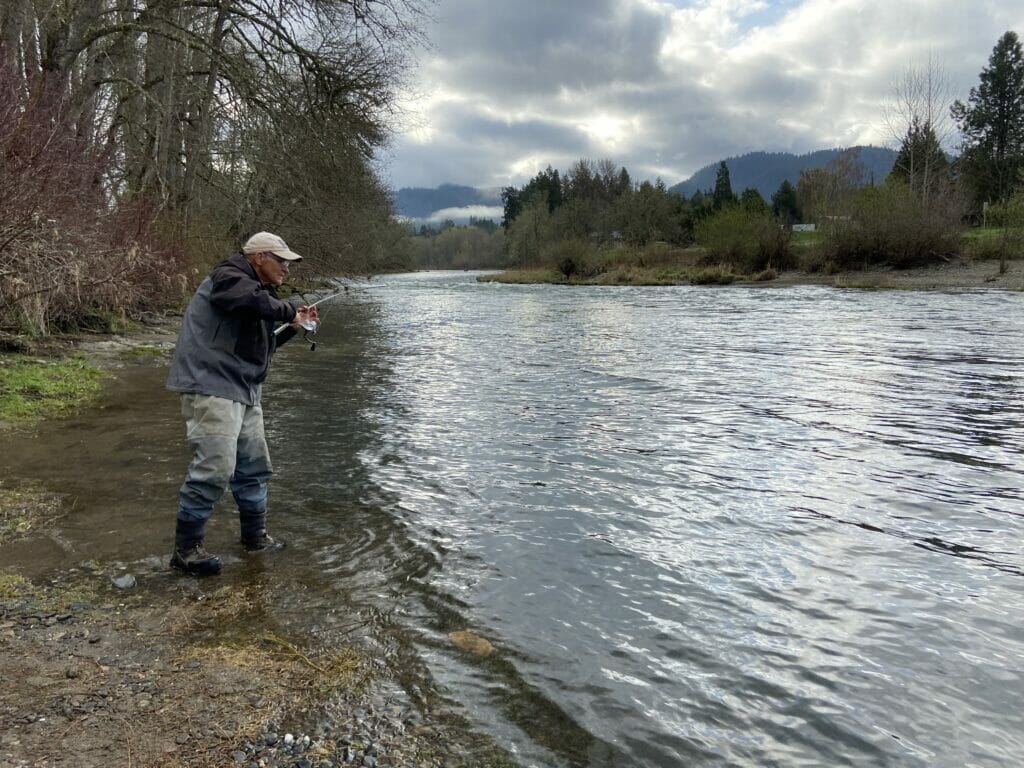
The terminal end of a centerpin steelhead rig is not much different from a traditional indicator rig you’d throw on a fly rod. It consists of a float below which is suspended the fly, jig, bead or whatever. (I used beads exclusively during this trip.) A difference is that we usually focus our fly rod indicator fishing upstream, while a centerpin excels at downstream presentations.
While I typically fish this run on the South Umpqua with a switch rod and indicator rigs, low water meant that steelhead were holding too far out for a good fly rod presentation. I needed to be able to cast at least 75 feet in order to get a good drift through the best water. There are people who can pull that off with fly gear. I am not one of them.
Casting is a big difference. With a centerpin reel, the line is not enclosed on the spool. It flows off the spool like line flows off a spinning reel spool when the bail is open. But, because the spool faces to the side, not front, you need to use your non-rod hand as a guide for the line as it flows off the reel. It sounds harder than it is.
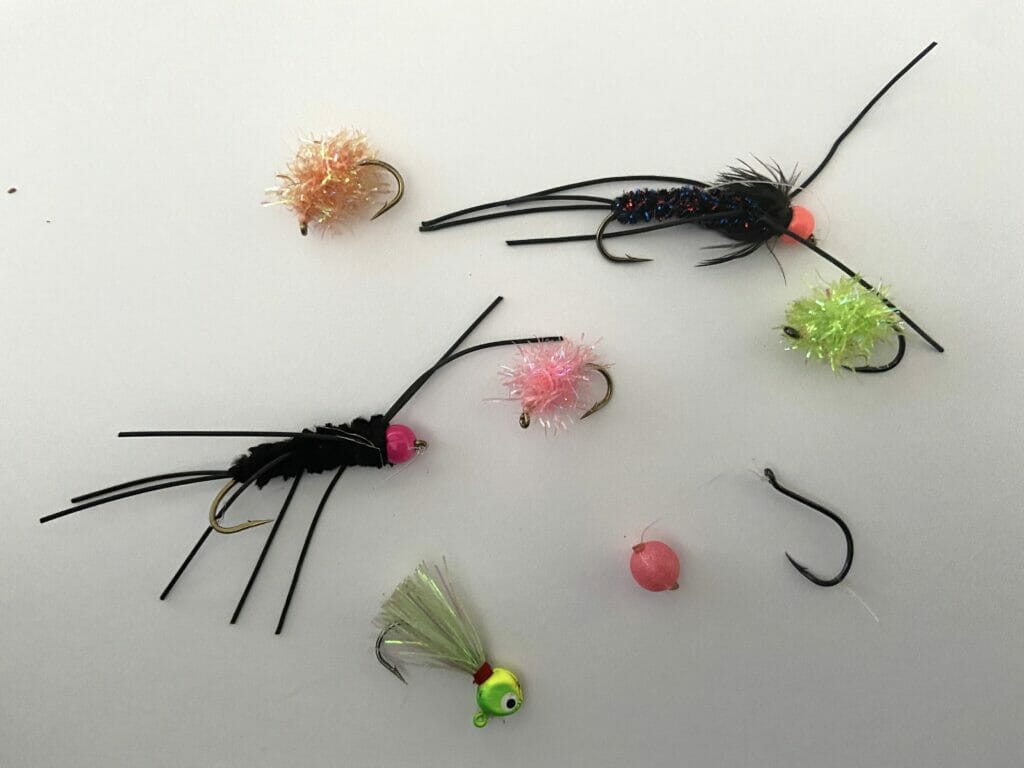
With a little practice I was able to cast as far as I needed to, and to effectively fish this and other similar runs on the medium-sized South Umpqua. That said, I managed to mess up plenty, usually when I forgot to keep that off-rod hand out there to guide the line. (Habits formed from 50 years with spinning gear die hard.)
Centerpin rods are flexible, an advantage when fighting a strong fish with a drag-free reel. If you don’t palm the reel just right there’s still some margin for error because the rod is so flexible.
But I was soon to find out that that length and flexibility can be a liability when you’re trying to slide a fish — in this case a colored-up, fin-clipped buck — up on a bank.
The water was a bit deep for Pat to wade in to try to tail the fish. So, as the steelie finned about 10 feet off the bank, Pat and I just kind of looked at each other with “What do we do now?” expressions.
No answer was needed because the hook pulled a moment later.
“A little dark to keep anyway,” Pat said, trying to make me feel better. “And you got all the fun out of it.”
I stuck with the centerpin rig during the rest of my stay, including fishing several good runs during an all-day float a few days later with my brother. Despite the effort I wasn’t rewarded with anymore “bobber down” moments. It was little consolation that fishing was tough for everyone.
The morning before my return to Virginia I decided to give it one more shot. And it worked out.
In two hours of fishing, I had two strikes, both of which resulted in solid hookups and landed fish. One was a 5-pound hatchery buck that was too dark to keep (but pretty in pictures). The other was a dime-bright wild hen of about 4 pounds that I released quickly, before pictures.
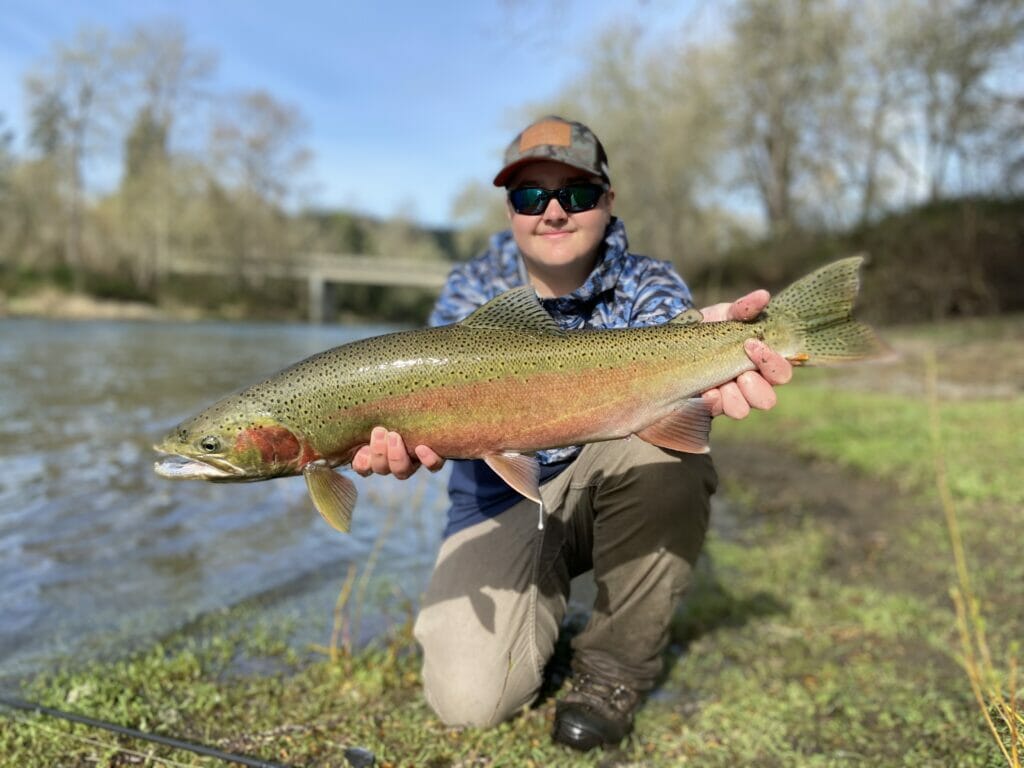
After I hooked the second fish, one of the spot’s regulars, a 16-year-old steelhead fanatic named Peyton Mahlberg, was giddy.
“He’s got another one on the centerpin!” he shouted to his buddy Greg.
When someone as good as Peyton is at steelheading is impressed, that’s saying something.
I left the rod at my parents’ but brought the reel home. I’m thinking I’lI put it on a long, flexible crappie rod and try it for trout. An even further descent into darkness? Nah. Just another fishing experiment in a lifetime full of them.



